|
|
|
| Marty McDonald (L) & Angela Berardino (R) co-authored this article. | |
Two years ago, in O’Dwyer’sJuly 2014 travel issue, we dug into a few of the emerging trends in travel PR. We discussed the fact that travel PR leaders everywhere were poised to take advantage of the increasing gray space among paid, earned and owned content by refusing to be relegated to the role of publicist.
Have PR leaders stepped up to this challenge to drive destination brand development? Fahlgren Mortine and Turner surveyed a cross-section of domestic destination marketing organizations to gauge our collective progress and learn more about how the game continues to change for marketers today.
|
|
The results confirm that while the same core trends and challenges remain, communications leaders are getting comfortable in the driver’s seat.
Brands as publishers
With the ever-changing — and often-shrinking — traditional media landscape, brands can no longer rely on someone else’s distribution channels. Brands must go direct, and that means budgeting for both staff and asset production.
With a honed content strategy and a commitment to producing relevant branded content, we’re seeing more and more DMOs relieve some of their dependence on the media by stepping into the publisher space.
“The downsizing of news staffs and syndication of content from parent companies like Gannett makes securing hits in our drive markets challenging,” said Emily Lauer, Senior Dir. of PR/Communications for Destination Cleveland.
The paid/earned/owned grayspace
According to Chris Mickey, Media and PR Manager for Wyoming Office of Tourism, navigating the blurred lines between paid, earned and owned is still a major challenge.
“With the ever-increasing shift to online resources and social media, we are constantly adjusting to make sure everything we do has an online component. Making heads or tails of online publications can be exhausting on resources, but we’re leading the charge for vetting all content producers across the program,” he said.
In addition to unclear boundaries and roles, the speed of change is causing PR leaders to act fast and think differently about their programs.
“Not only are the platforms all changing at once, but we’re focused on shifting to mobile consumption more than ever,” said Andrea Czopp, Comms. Manager at Niagara Tourism and Convention Corporation.
The great reporting overhaul
While the majority of PR leaders agree that somewhere, a unicorn dies every time we report Ad Value Equivalency, there’s still reluctance to abandon this metric because it’s based in real dollars, which resonates with stakeholders. Many practitioners today are evolving on a dual track — reporting AVEs in the spirit of benchmarking, but emphasizing true value through qualitative discussion and education about brand-building quality, reach, engagement, positivity and many other, more meaningful factors.
According to Andrea Mensink, Director of Comms. and Marketing for the Columbia, S.C. CVB, “Our most important metrics include alignment with the brand and consumer profile, positive tone, and the degree to which the coverage inspires travel. We are starting to report on social engagement factors, but just anecdotally at this stage.”
Carrie Westergard, Exec. Director for the Boise CVB, believes there’s still a lot to be said for valuing certain activities over others. “We know that a media visit to our city tells the story far better than an event or desk-side meeting, so we put a high priority on our number of visiting journalists/bloggers.”
It seems many DMOs still use standard reporting based on reach and engagement, but quality still reigns supreme.
According to Kim Schmidt, PR Manager for the North Dakota Department of Commerce, “The goal should always be quality over quantity — though we all know that’s a careful balance when the stakeholders want both volume and wow.”
More brands shaking hands
As PR leaders look to do more with less, they must remain vigilant for ways to stretch budgets, stay relevant and capture new brand fans. As a result, destinations are linking up with consumer products and lifestyle-focused partners in new and creative ways.
Chris Mickey of Wyoming Office of Tourism said his office recently worked with Disney-Pixar to be the official destination partner for the movie “The Good Dinosaur,” and also announced a paleontology-focused partnership with Sinclair Oil.
“These partnerships are geared toward increasing our own marketing value, creating fresh content together, and generally piggybacking off of each others efforts,” he said.
Because so many consumer products and commodity brands are moving in the lifestyle direction, partnerships with destinations are now highly sought-after.
Visual curation
In today’s environment, we’re not just up against competing marketing messages, we’re vying for precious moments of attention. We need to move fast, keep it simple and build narratives in new ways just to keep up.
“As a bureau with a small staff that is often pulled in many directions, it’s important for us to use curation to close the content gap,” said Sara Blatnik, Comms. Manager for the Dublin, Ohio CVB. “Because we can’t always produce enough content to keep the pipeline full, we work hard to leverage the right social influencers.”
Leadership
What we really wanted to learn was whether or not PR was out in front as a powerful force in building destination brands.
Thankfully, the answer to that question was a dominant “yes.” Nearly every DMO we surveyed indicated that PR is in a lead position as it relates to brand building, content planning and strategy setting.
According to TourismOhio PR Manager Tamara Brown, “PR tends to take the lead, in part because we set the messaging/editorial calendar, and because of the multidisciplinary nature of what we do — from building landing pages to driving awareness through social media.”
This perspective was a consistent theme across various DMOs.
“At TravelNevada, the PR team leads the strategy because there’s intricate messaging and targeting work to be done in today’s complex environment. Sure, we still need the hero content and the TV/video spots, but finding relevance and endorsement in an authentic way — that’s the real hero work,” said Chief Comms. Officer Bethany Drysdale.
It’s encouraging to see that key leaders in our field are taking the opportunity to lead, not stepping back like shrinking violets.
* * *
Marty McDonald is Senior VP and Tourism Practice Leader at Fahlgren Mortine. Angela Berardino is Chief Strategy and Integration Officer for Turner (a Fahlgren Mortine company).

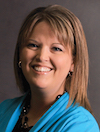

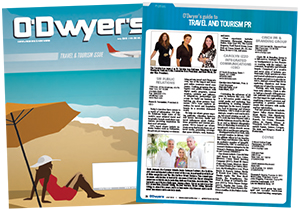

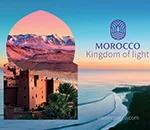 Weber Shandwick is providing PR and marketing communications services to the Moroccan National Tourist Office in New York.
Weber Shandwick is providing PR and marketing communications services to the Moroccan National Tourist Office in New York.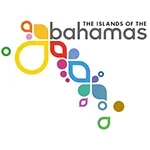 Finn Partners has filed its six-month contract with the Bahamas Ministry of Tourism, Investments & Aviation, which is worth $240K.
Finn Partners has filed its six-month contract with the Bahamas Ministry of Tourism, Investments & Aviation, which is worth $240K.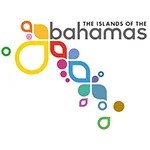 Weber Shandwick wrapped up its work for the Ministry of Bahamas at the end of 2023.
Weber Shandwick wrapped up its work for the Ministry of Bahamas at the end of 2023.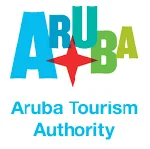 The Aruba Tourism Authority is boosting its budget 29.4 percent to $2.2M at Zeno Group, according to its 2024 contract, effective Jan. 1.
The Aruba Tourism Authority is boosting its budget 29.4 percent to $2.2M at Zeno Group, according to its 2024 contract, effective Jan. 1.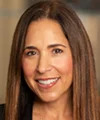 As inflation continues to impact spending, consumers are revisiting their list of what they’re willing to spend more of their money on. Luckily for those in the travel industry, experiences seem to be trending up on the “splurge” list.
As inflation continues to impact spending, consumers are revisiting their list of what they’re willing to spend more of their money on. Luckily for those in the travel industry, experiences seem to be trending up on the “splurge” list. 


 Have a comment? Send it to
Have a comment? Send it to 
No comments have been submitted for this story yet.